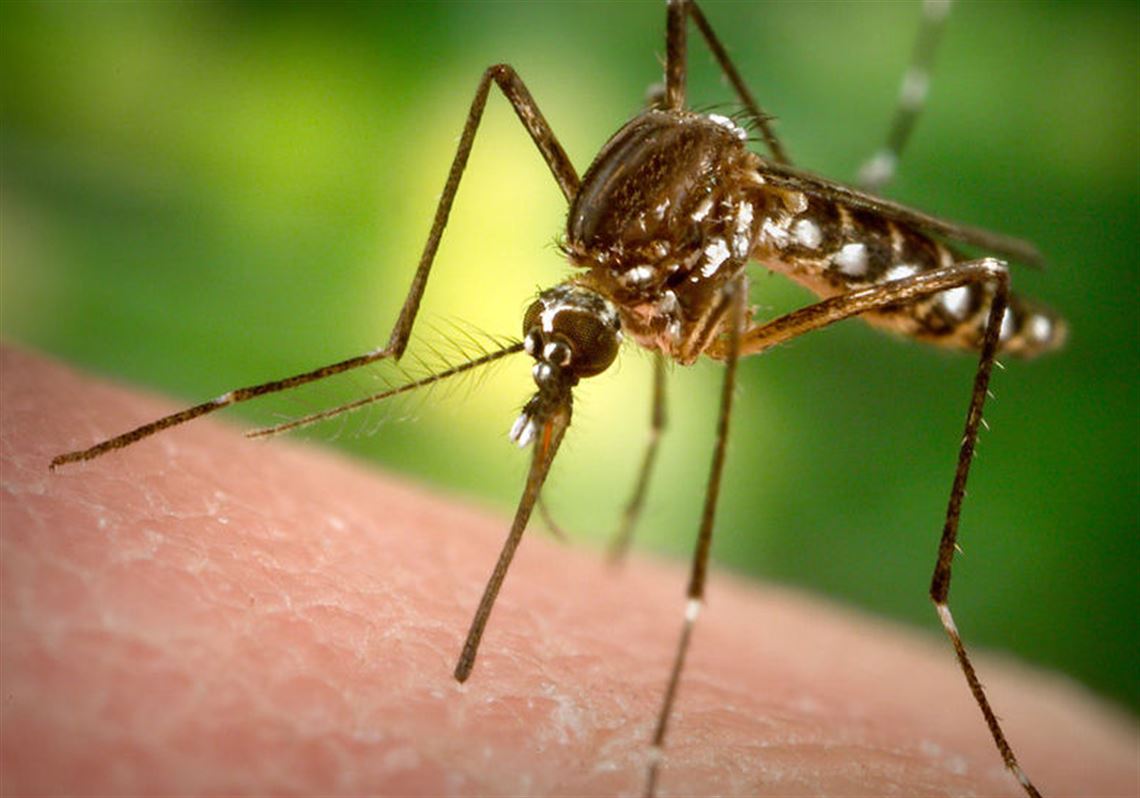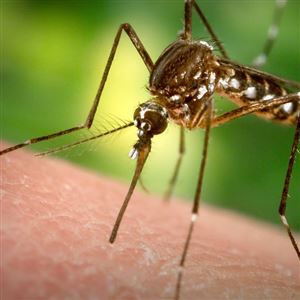As the Zika virus charges through broad swaths of Central and South America, just two types of mosquito have caught most of the blame for spreading the illness.
Now a disease researcher at Penn State University plans to investigate whether several species native to the United States also could infect people. Associate professor Jason Rasgon said Monday that he hopes to have initial results by the summer, even if he doesn’t land the grant money that he wants to support the project.
“I don’t think we can afford to wait,” said Mr. Rasgon, who studies disease epidemiology in the College of Agricultural Sciences at University Park. He said he doesn’t have “the foggiest idea” whether the native species might be able to relay Zika to humans.
Establishing that knowledge for about 10 types of mosquitoes — most of them present in Pennsylvania — could take about a year, Mr. Rasgon said. He’s working to secure a laboratory sample of Zika, now in fierce demand among scholars.
Most people infected by the virus don’t show any symptoms, which can include a fever, rash and joint pain that last about a week. A more serious threat may menace infected pregnant women, who are facing elevated rates of severe birth defects in epidemic-stricken countries.
Part of Mr. Rasgon’s concern stems from Brazil, where researchers are looking into whether some Culex mosquitoes there might join Aedes mosquitoes, a confirmed vector, in transmitting Zika, according to news reports. A similar Culex species called the northern house mosquito already helps spread West Nile virus in the U.S.
West Nile first appeared in Pennsylvania in 2000, since then killing 32 people and sickening more than 300 others across the state, according to public health records. West Nile’s ability to travel in birds, plus the widespread prevalence of Culex mosquitoes in the region, propelled the virus quickly, said Amesh Adalja, senior associate at the UPMC Center for Health Security.
“Birds can travel immeasurably longer distances than mosquitoes do. Once it was in the bird population, the gate was open,” Dr. Adalja said.
He said Zika would probably prove slower to spread and more geographically limited if the virus were to infect Pennsylvania mosquitoes. It has a natural host in primates, not birds, and the only mosquito species in the state that’s known to transmit the bug is much less common in the region, Dr. Adalja said.
That Zika-friendly insect is the Asian tiger mosquito, or Aedes albopictus, which first landed in the area about a decade ago, said medical entomologist Bill Todaro. More prevalent in southeastern parts of the state, it’s also shown up in Bloomfield and Lawrenceville, said Mr. Todaro, who works for the Allegheny County Health Department.
“Trying to control it is very tough because they can breed in such small places,” although populations aren’t “at a level that really causes complaints,” he said.
Mr. Todaro suspects Zika would not reach West Nile proportions in Pennsylvania. He said the Asian tiger mosquito probably isn’t as effective in spreading the virus as the Aedes aegypti species. The latter is thought to be most responsible for transmitting Zika in epidemic-affected countries, where the ongoing outbreak began in May.
No Zika-infected mosquitoes have been reported in the continental U.S. Fifty-two human cases diagnosed in the country over the last year are tied to travel, according to the Centers for Disease Control and Prevention. One case in Texas appears to have developed through sexual intercourse.
Aedes aegypti populations there and in Florida could soon host Zika, public health experts have said. It’s premature to make any such predictions for Aedes albopictus in Pennsylvania, said Brandon Cwalina, a spokesman at the state Department of Environmental Protection. He said a state response plan remains under development.
“Fortunately, the same stuff we use to kill West Nile virus-carrying mosquitoes will also kill Zika-carrying mosquitoes,” Mr. Cwalina said. He said the department suggests dumping any standing water to keep the insects from reproducing.
Back at Penn State, Mr. Rasgon said he wouldn’t call Zika a major threat in Pennsylvania. He said that could change if research finds that native mosquitoes can relay the virus to people.
He assumes researchers elsewhere are undertaking similar efforts, Mr. Rasgon said.
“As part of the university, I think I have a duty to the taxpayers in Pennsylvania, the people in Pennsylvania, to look at things that are going to affect them,” he said.
Adam Smeltz: asmeltz@post-gazette.com, 412-263-2625 or on Twitter @asmeltz.
First Published: February 16, 2016, 5:00 a.m.
Updated: February 16, 2016, 5:30 a.m.




















